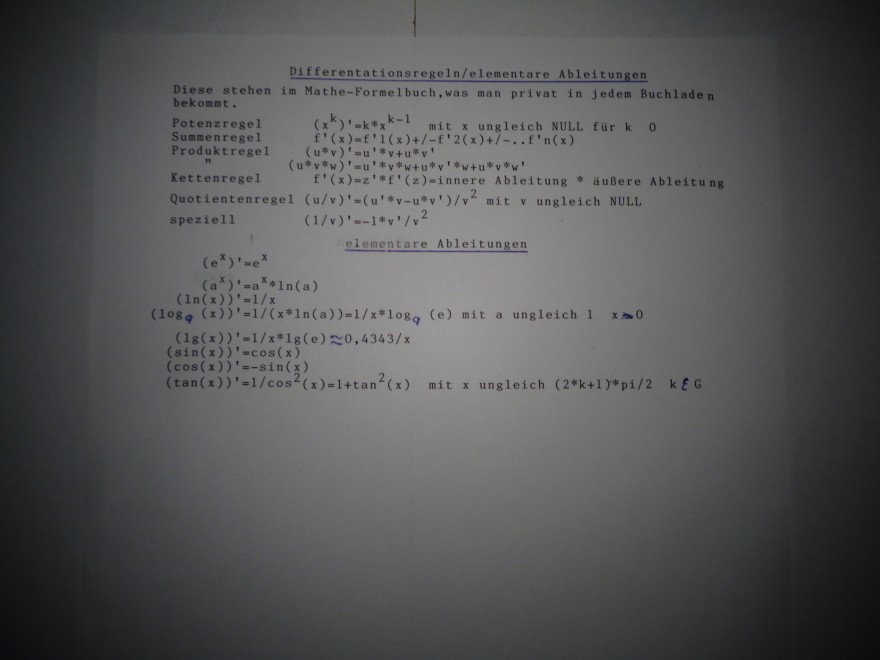b) f(x)=sin(4*x+2)
Kettenregel f´(x)=z´*f´(z)=innere Ableitung mal äußere Ableitung
elementare Ableitung f(x)=sin(x) → f´(x)=cos(x)
Substitution (ersetzen) z=4*x+2 abgeleitet z´=dz/dx=4 f(z)=sin(z) → f´(z)=cos(z)
f´(x)=z´*f´(z)=4*cos(4*x+2)
zu f) Produktregel (u*v)´=u´*v+u*v´
f(x)=sin(x)*cos(x)
u=sin(x) elementare Ableitung → u´=du/dx=cos(x)
v=cos(x) elementare Ableitung → v´=dv/dx=-1*sin(x)
f´(x)=cos(x)*cos(x)+sin(x)*-1*sin(x)
f´(x)=cos²(x)-sin²(x)=cos(2*x) siehe Mathe-Formelbuch,trigonometrische Funktionen
e) spezielle Quotientenregel (1/v)´=-1*v´/v²
f(x)=1/x³ v=x³ v´=dv/dx=3*x² und v²=(x³)²=x⁶ f´(x)=-1*3*x²/x⁶=-3/x^4
Produktregel anwenden und Konstantenregel
hier Infos per Bild,vergrößern und/oder herunterladen

Text erkannt:
Different scan and partace to decos bactiodent from to to stropent and and to the Retences sectesses achere of the solotant degration ace colopeconation are are o contoran tom spercon colopestord
\( \left(a^{3}\right) d x \)
ansing Molumen caccioss shan clogetes staticestionsing and a alce and thes is and cancestegento so angle \( d \varphi \)
ceactes diver tesperent col alc reachates cersomals reat